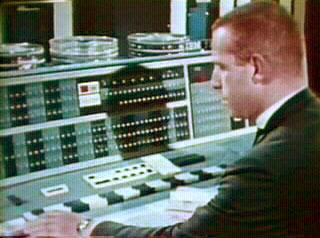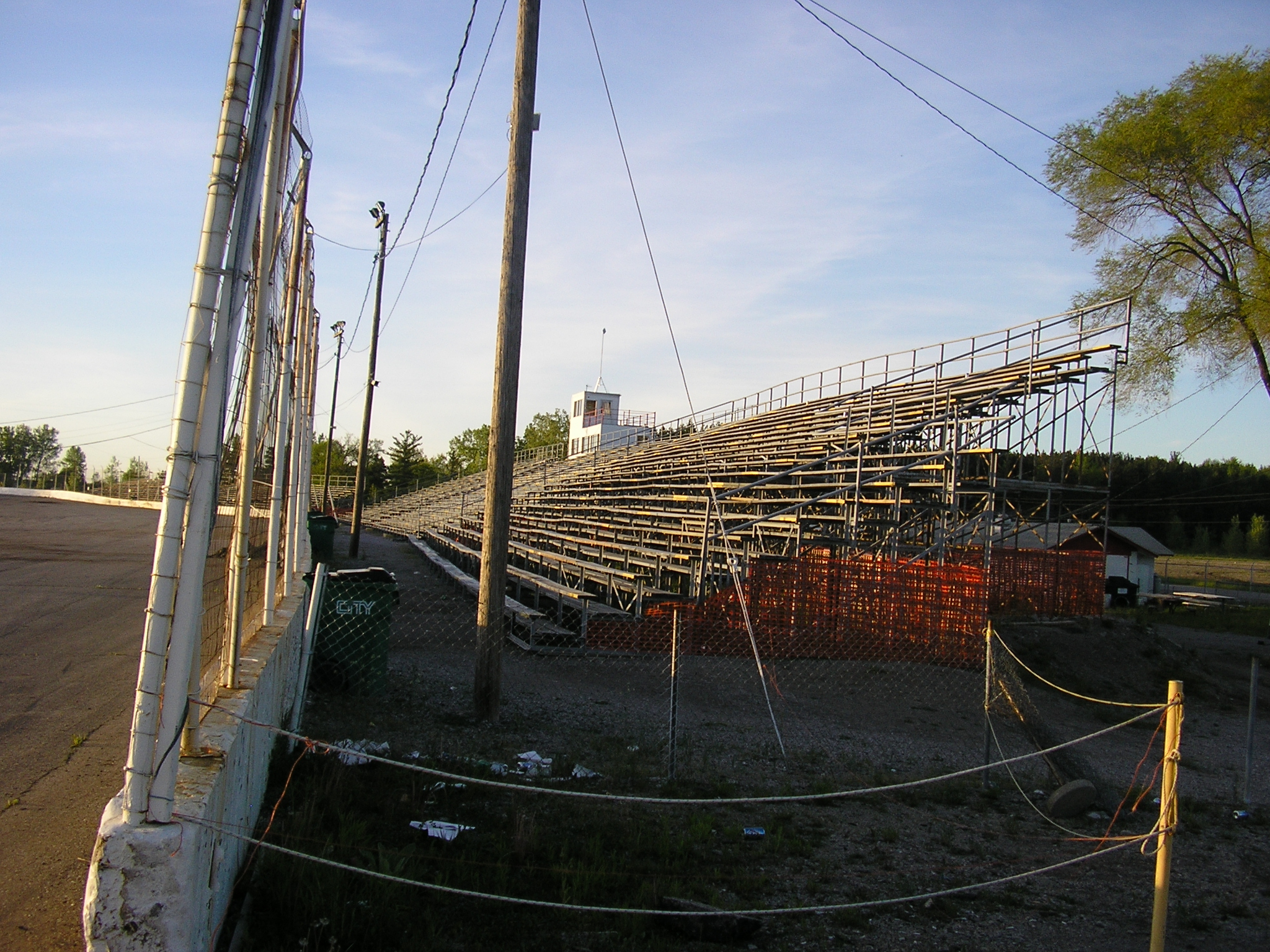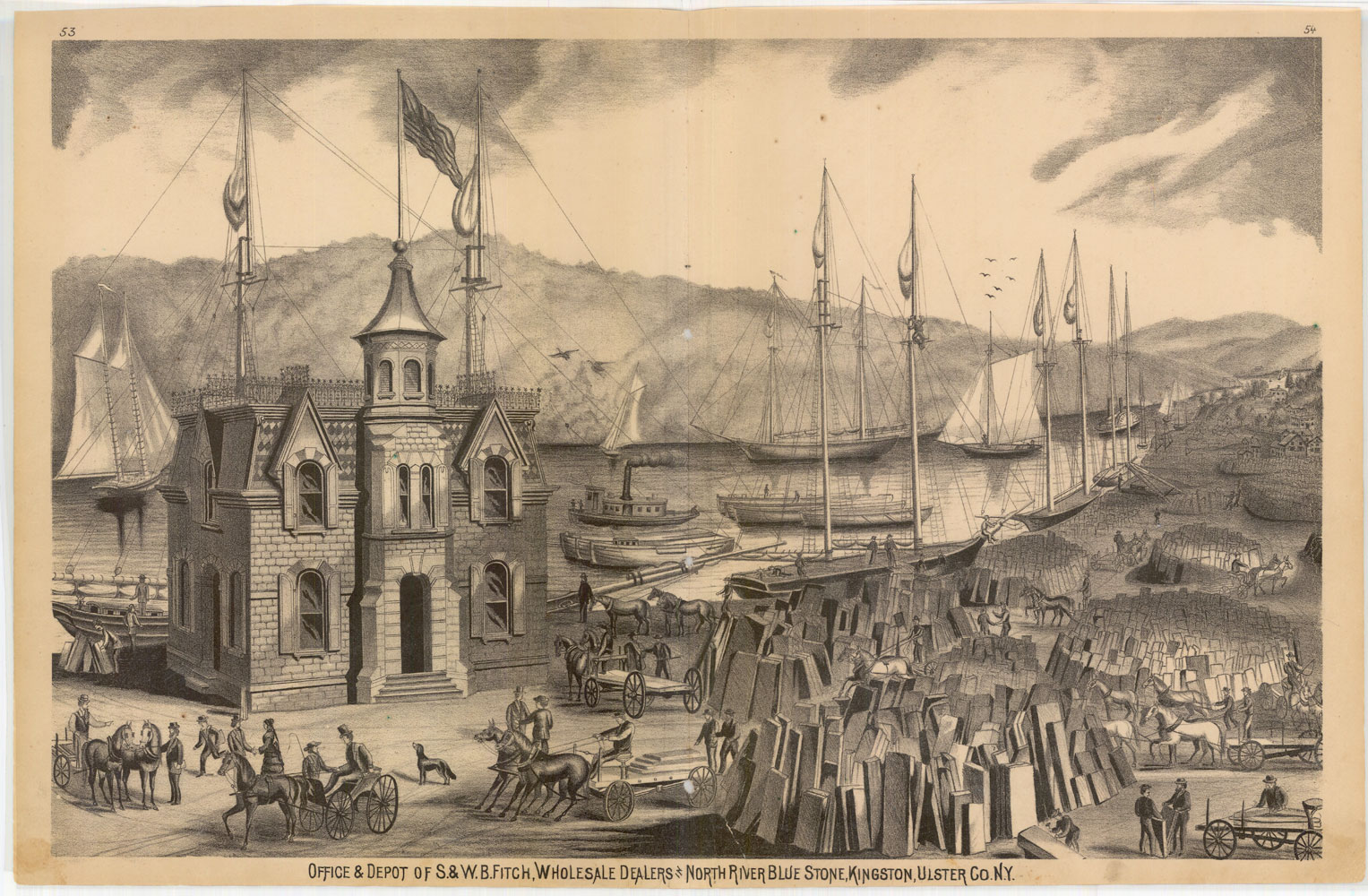|
Dac-1
DAC-1, for ''Design Augmented by Computer'', was one of the earliest graphical computer aided design systems. Developed by General Motors, IBM was brought in as a partner in 1960 and the two developed the system and released it to production in 1963. It was publicly unveiled at the Fall Joint Computer Conference in Detroit 1964. GM used the DAC system, continually modified, into the 1970s when it was succeeded by CADANCE. History Genesis GM was an early computer user, using punched card machines as early as 1952 for engineering analysis. In 1955 they moved their computing services into the new Data Processing department of GM Research Laboratories. In 1956, together with North American Aviation, they developed the first "official" batch processing operating system for IBM systems, GM-NAA I/O. In 1958 they were one of the earliest users of IBM's new FORTRAN compiler.''Origin'', pg. 41 In June 1958 GM Research started a program to better understand the problems and potential impr ... [...More Info...] [...Related Items...] OR: [Wikipedia] [Google] [Baidu] |
Computer Aided Design
Computer-aided design (CAD) is the use of computers (or ) to aid in the creation, modification, analysis, or optimization of a design. This software is used to increase the productivity of the designer, improve the quality of design, improve communications through documentation, and to create a database for manufacturing. Designs made through CAD software help protect products and inventions when used in patent applications. CAD output is often in the form of electronic files for print, machining, or other manufacturing operations. The terms computer-aided drafting (CAD) and computer-aided design and drafting (CADD) are also used. Its use in designing electronic systems is known as ''electronic design automation'' (''EDA''). In mechanical design it is known as ''mechanical design automation'' (''MDA''), which includes the process of creating a technical drawing with the use of computer software. CAD software for mechanical design uses either vector-based graphics to depict t ... [...More Info...] [...Related Items...] OR: [Wikipedia] [Google] [Baidu] |
IBM 7090
The IBM 7090 is a second-generation Transistor computer, transistorized version of the earlier IBM 709 vacuum tube mainframe computer that was designed for "large-scale scientific and technological applications". The 7090 is the fourth member of the IBM 700/7000 series#Scientific Architecture, IBM 700/7000 series scientific computers. The first 7090 installation was in December 1959. In 1960, a typical system sold for $2.9 million (equivalent to $ million in ) or could be rented for $63,500 a month (). The 7090 uses a 36-bit word length, with an address space of 32,768 words (15-bit addresses). It operates with a basic memory cycle of 2.18 μs, using the IBM 7302 Core Storage Magnetic-core memory, core memory technology from the IBM 7030 (Stretch) project. With a processing speed of around 100 FLOPS, Kflop/s, the 7090 is six times faster than the 709, and could be rented for half the price. An upgraded version, the 7094, was up to twice as fast. Both the 7090 and the 7094 ... [...More Info...] [...Related Items...] OR: [Wikipedia] [Google] [Baidu] |
Digigraphics
Digigraphics was one of the first graphical computer aided design systems to go on sale. Originally developed at Itek on the PDP-1 as EDM (''Electronic Drafting Machine''), the efforts were purchased by Control Data Corporation and ported to their machines, along with a new graphics terminal to support it. Systems cost almost $500,000 and supported only a few users at a time, so in spite of a number of advantages it was not cost competitive with traditional manual methods and only a few systems were sold. History Genesis at Itek MIT's Lincoln Laboratory developed the first high-speed computer in the form of Whirlwind, as part of the US Air Force's SAGE project. SAGE not only required high-speed computers, but also graphical displays and light pens to operate them in real-time. The ideas developed during the SAGE program "leaked out" into the industry as SAGE wound down and its many members moved on to other projects. Ken Olsen formed Digital Equipment Corporation (DEC) and took many ... [...More Info...] [...Related Items...] OR: [Wikipedia] [Google] [Baidu] |
Itek
Itek Corporation was a United States defense contractor that initially specialized in camera systems for spy satellites and various other reconnaissance systems. In the early 1960s they built a conglomerate in a fashion similar to LTV or Litton, during which time they developed the first CAD system and explored optical disc technology. These efforts were unsuccessful, and the company shed divisions to various companies, returning to its roots in the reconnaissance market. The remaining portions were eventually purchased by Litton in 1983, and then Hughes, Raytheon, and Goodrich Corporation. History Beginnings Richard Leghorn was a former United States Air Force (USAF) aerial reconnaissance expert who had first proposed flying reconnaissance missions over enemy territory in peacetime.Lewis, 2002 Leghorn left the Air Force to become head of Eastman Kodak's European division,Time, 1963 and started writing about the " Open Skies" proposal, which he strongly supported. Open Ski ... [...More Info...] [...Related Items...] OR: [Wikipedia] [Google] [Baidu] |
IBM 1405
IBM manufactured magnetic disk storage devices from 1956 to 2003, when it sold its hard disk drive business to Hitachi. Both the hard disk drive (HDD) and floppy disk drive (FDD) were invented by IBM and as such IBM's employees were responsible for many of the innovations in these products and their technologies. The basic mechanical arrangement of hard disk drives has not changed since the IBM 1301. Disk drive performance and characteristics are measured by the same standards now as they were in the 1950s. Few products in history have enjoyed such spectacular declines in cost and physical size along with equally dramatic improvements in capacity and performance. IBM manufactured 8-inch floppy disk drives from 1969 until the mid-1980s, but did not become a significant manufacturer of smaller-sized, 5.25- or 3.5-inch floppy disk drives (the dimension refers to the diameter of the floppy disk, not the size of the drive). IBM always offered its magnetic disk drives for sale but did no ... [...More Info...] [...Related Items...] OR: [Wikipedia] [Google] [Baidu] |
IBM 1401
The IBM 1401 is a variable word length computer, variable-wordlength decimal computer that was announced by IBM on October 5, 1959. The first member of the highly successful IBM 1400 series, it was aimed at replacing unit record equipment for processing data stored on punched cards and at providing peripheral services for larger computers. The 1401 is considered by IBM to be the Ford Model T, Ford Model-T of the computer industry due to its mass appeal. Over 12,000 units were produced and many were leased or resold after they were replaced with newer technology. The 1401 was withdrawn on February 8, 1971. History The 1401 project evolved from an IBM project named "World Wide Accounting Machine" (WWAM), which in turn was a reaction to the success of the Bull Gamma 3. The 1401 was used as an independent system in conjunction with IBM punched card equipment. It was also operated as auxiliary equipment to IBM 700/7000 series, IBM 700 or 7000 series systems. Monthly rental for 140 ... [...More Info...] [...Related Items...] OR: [Wikipedia] [Google] [Baidu] |
Bleacher
Bleachers (North American English), or stands, are raised, tiered rows of benches found at sports-fields and at other spectator events. Stairways provide access to the horizontal rows of seats, often with every other step enabling access to a row of benches. Benches range from simple planks to elaborate ones with backrests. Many bleachers are open to the ground below so that there are only the planks to sit and walk on. Some bleachers have vertical panels beneath the benches, either partially or completely blocking the way to the ground. Name origins The open seating area in baseball was called the "bleaching boards" as early as 1877. The term "bleachers" used in the sense of benches for spectators can be traced back to at least 1889; named as such because the generally uncovered wooden boards were "bleached by the sun". ''The Dickson Baseball Dictionary'' lists as a ''secondary'' definition the fans sitting in them. By the early 1900s, the term "bleachers" was being used ... [...More Info...] [...Related Items...] OR: [Wikipedia] [Google] [Baidu] |
Convair
Convair, previously Consolidated Vultee Aircraft Corporation, was an American aircraft-manufacturing company that later expanded into rockets and spacecraft. The company was formed in 1943 by the merger of Consolidated Aircraft and Vultee Aircraft. In 1953, it was purchased by General Dynamics, and operated as their Convair Division for most of its corporate history. Convair is best known for its military aircraft; it produced aircraft such as the Convair B-36 Peacemaker and Convair B-58 Hustler strategic bombers, and the Convair F-102 Delta Dagger and Convair F-106 Delta Dart interceptors. It also manufactured the first Atlas rockets, including the rockets that were used for the crewed orbital flights of Project Mercury. The company's subsequent Atlas-Centaur design continued this success and derivatives of the design remain in use as of 2025. The company also entered the jet airliner business with its Convair 880 and Convair 990 designs. These were smaller than conte ... [...More Info...] [...Related Items...] OR: [Wikipedia] [Google] [Baidu] |
Kingston, NY
Kingston is the only city in, and the county seat of, Ulster County, New York, United States. It is north of New York City and south of Albany. The city's metropolitan area is grouped with the New York metropolitan area around Manhattan by the United States Census Bureau. The population was 24,069 at the 2020 United States census. Kingston became New York's first capital in 1777. During the American Revolutionary War, the city was burned by the British on October 13, 1777, after the Battles of Saratoga. In the 19th century, it became an important transport hub after the discovery of natural cement in the region. It had connections to other markets through both the railroad and canal connections. Many of the older buildings are considered contributing as part of three historic districts, including the Stockade District uptown, the Midtown Neighborhood Broadway Corridor, and the Rondout-West Strand Historic District downtown. Each district is listed on the National Regis ... [...More Info...] [...Related Items...] OR: [Wikipedia] [Google] [Baidu] |
Warren, MI
Warren is a city in Macomb County in the U.S. state of Michigan. An inner-ring suburb of Detroit, Warren borders Detroit to the north, roughly north of downtown Detroit. The population was 139,387 at the 2020 census, making Warren the largest community in Macomb County, the third-largest city in Michigan, and Detroit's largest suburb. The city is home to a wide variety of businesses, including the General Motors Technical Center, the United States Army Detroit Arsenal, home of the United States Army TACOM Life Cycle Management Command and the Tank Automotive Research, Development and Engineering Center (TARDEC), and the headquarters of Asset Acceptance. History Beebe's Corners, the original settlement in what would become the city of Warren, was founded in 1830 at the corner of Mound Road and Chicago Road; its first resident was Charles Groesbeck. [...More Info...] [...Related Items...] OR: [Wikipedia] [Google] [Baidu] |
Hard Disk
A hard disk drive (HDD), hard disk, hard drive, or fixed disk is an electro-mechanical data storage device that stores and retrieves digital data using magnetic storage with one or more rigid rapidly rotating hard disk drive platter, platters coated with magnetic material. The platters are paired with disk read-and-write head, magnetic heads, usually arranged on a moving actuator arm, which read and write data to the platter surfaces. Data is accessed in a random-access manner, meaning that individual Block (data storage), blocks of data can be stored and retrieved in any order. HDDs are a type of non-volatile storage, retaining stored data when powered off. Modern HDDs are typically in the form of a small disk enclosure, rectangular box. Hard disk drives were introduced by IBM in 1956, and were the dominant secondary storage device for History of general-purpose CPUs, general-purpose computers beginning in the early 1960s. HDDs maintained this position into the modern er ... [...More Info...] [...Related Items...] OR: [Wikipedia] [Google] [Baidu] |
IBM 1301
IBM manufactured magnetic disk storage devices from 1956 to 2003, when it sold its hard disk drive business to Hitachi. Both the hard disk drive (HDD) and floppy disk drive (FDD) were invented by IBM and as such IBM's employees were responsible for many of the innovations in these products and their technologies. The basic mechanical arrangement of hard disk drives has not changed since the IBM 1301. Disk drive performance and characteristics are measured by the same standards now as they were in the 1950s. Few products in history have enjoyed such spectacular declines in cost and physical size along with equally dramatic improvements in capacity and performance. IBM manufactured 8-inch floppy disk drives from 1969 until the mid-1980s, but did not become a significant manufacturer of smaller-sized, 5.25- or 3.5-inch floppy disk drives (the dimension refers to the diameter of the floppy disk, not the size of the drive). IBM always offered its magnetic disk drives for sale but did no ... [...More Info...] [...Related Items...] OR: [Wikipedia] [Google] [Baidu] |










